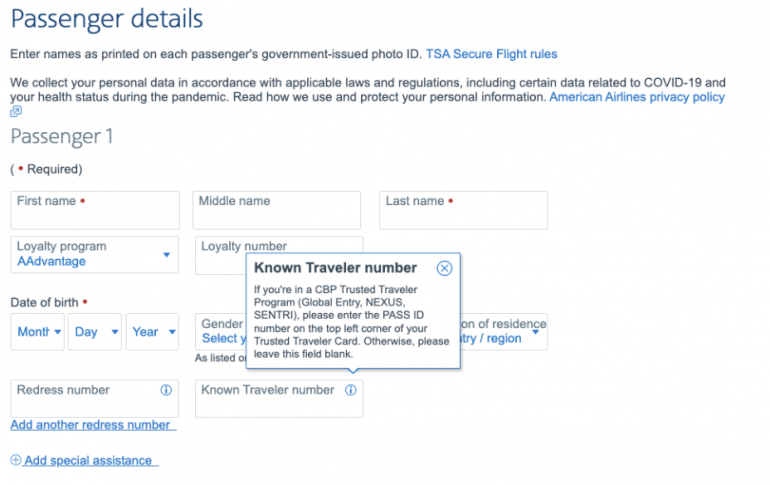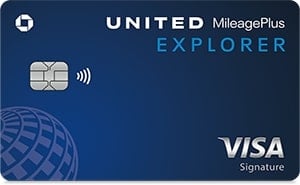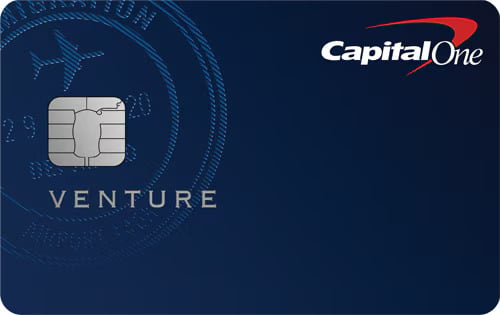Nexus vs. Global Entry: Which Is Better?
Unless you only plan to travel between the U.S. and Canada, you may as well go with Global Entry.

Many or all of the products on this page are from partners who compensate us when you click to or take an action on their website, but this does not influence our evaluations or ratings. Our opinions are our own.
After a red-eye flight or a long car ride, it's not ideal to be stuck in a long line at customs or the border. A trusted traveler program like Global Entry or Nexus can get you where you're going faster.
Given that application fees for both programs are the same ($120), which is better?
The main difference between Global Entry and Nexus is that Global Entry allows for expedited reentry to the U.S. when returning from any country abroad. On the other hand, Nexus allows expedited passage between the U.S. and Canada.
Global Entry and Nexus also differ in who is eligible for the programs. Global Entry is available to citizens of the U.S. and 14 other countries, while Nexus is available to citizens and residents of the U.S. and Canada (and Mexican nationals).
All Nexus members are eligible for Global Entry benefits —and TSA PreCheck benefits — as long as their passport and fingerprints were collected at the enrollment interview. The catch is that to get a Nexus membership, you need to go for an in-person interview. The interview locations are along the U.S.-Canada border and at major airports in Canada, so proximity to an interview location may limit who can apply for Nexus.
The programs share other similarities and also some differences. Here's a look at Global Entry versus Nexus.
Get a reimbursement for TSA PreCheck or Global Entry with our favorite cards
Check out our nerdy picks for the best cards for travelers that want TSA PreCheck or Global Entry.

Global Entry vs. Nexus at a glance
This chart shows the difference between Nexus and Global Entry.
| Nexus | Global Entry | |
|---|---|---|
| Expedites your entry into the U.S. from Canada | Yes. | Yes. |
| Expedites your entry into Canada from the U.S. | Yes. | No. |
| Expedites your entry into the U.S. from other countries | Yes.* | Yes. |
| Works for land, air and sea travel | Yes. | Yes. |
| Includes TSA PreCheck | Yes. | Yes. |
| U.S. citizens eligible | Yes. | Yes. |
| Canadian citizens eligible | Yes. | Yes (via Nexus). |
| Interview required to apply | Yes. | Yes. |
| Membership lasts | 5 years. | 5 years. |
| Cost | $120. | $120. |
*All current Nexus members are eligible to use Global Entry kiosks once they provide fingerprints and document information to U.S. Customs and Border Protection.
» Learn more: How redress numbers work for travel
Global Entry
Typically, anytime you return to the United States from another country, you have to go through customs, a process with U.S. Customs and Border Protection (CBP) that includes passport checks and potentially an interview with a live agent — sometimes after standing in line for half an hour or more.
Global Entry, a program run by CBP, allows preapproved passengers who are deemed low risk to skip this process when they return to the U.S. by instead using an automated kiosk at more than 75 airports. At these entry kiosks, you'll swipe your passport, scan your fingerprints and fill out a customs declaration form — then you're done.
CBP also has Global Entry kiosks at more than a dozen international airports, allowing members returning to the U.S. to go through the required customs and immigration processes before getting on their U.S.-bound planes. Then, when they land in the U.S., they're treated as domestic travelers, bypassing the customs and immigration hassles.
Citizens from the United States and 11 other countries — as well as Mexican nationals — are eligible for Global Entry membership. To become a Global Entry member, you must fill out an application, pass an extensive background check and get interviewed in person by a CBP officer.
Airports with Global Entry kiosks
Some Global Entry-eligible U.S. airports include:
Major U.S. airports with Global Entry kiosks
- Atlanta.
- Baltimore.
- Boston.
- Charlotte.
- Chicago.
- Dallas.
- Denver.
- Fort Lauderdale.
- Los Angeles.
- Miami.
- New York-JFK.
- Phoenix.
- Philadelphia.
If you're heading to the U.S., you may be able to use a Global Entry kiosk before you even board your flight. CBP operates these kiosks at select airports, including:
Major international airports with Global Entry kiosks
- Abu Dhabi.
- Aruba.
- Bermuda.
- Canada.
- Ireland.
- The Bahamas.
See this link for a complete list of airports with Global Entry kiosks.
How to apply for Global Entry
Ensure you're eligible by checking CBP's criteria before paying the nonrefundable $120 application fee. Some reasons for disqualification include:
- Crime conviction.
- Criminal charges.
- Current criminal investigation.
- Denial for the purchase of a firearm.
To begin the application process, create a Trusted Traveler Programs account and fill out the application online. Every traveler, including minors, must have an individual account.
CBP officials will then review your application, and if you’ve been approved, you'll be notified to schedule an in-person interview at a Global Entry Enrollment Center. Find the center nearest to you at this link.
🤓 Nerdy Tip
Suppose you're flying into the U.S. from abroad after your application is approved, but your interview has not been completed. In that case, you can finalize this last step at an Enrollment on Arrival location at certain airports. The CBP recommends using an Enrollment on Arrival location for anyone traveling into the U.S. in the next six months. No matter where you do your interview, bring your valid passport and one other form of official ID. In addition, bring your machine-readable permanent resident card if you're a lawful permanent resident. During your interview, you'll answer questions from a CBP officer, get photographed and supply biometric information like fingerprints.
Be prepared to supply other information or documents that could include:
- Proof of citizenship or proof that you're allowed to enter the United States.
- Driver's license.
- Proof of your current address.
- Address history for the past five years.
- Employment history for the past five years.
- International travel information for the past five years.
- Court documents if you've ever been convicted of a crime other than a traffic violation.
- Vehicle information if you plan on driving into the U.S. from Mexico.
What happens after you apply for Global Entry?
Once you fill out your application, it can take between four to six months or more to get final approval. Once approved, you'll be issued a Global Entry Card with your nine-digit CBP PASSID. You can also find this number anytime by logging in to your Trusted Traveler account.
You'll enter this number in the Known Traveler Number (KTN) field when you book plane tickets. For example, here is American Airlines' booking page showing the field where you enter your PASSID number.

Alternatively, you can add the KTN to your frequent flyer profile so that the number will be automatically included on your reservation. You’ll need to do this for each airline’s frequent flyer account.
» Learn more: What is a Known Traveler Number?
Global Entry cost
Global Entry costs $120 for a five year membership. You can renew your membership during the fourth year.
Credit dards that offer Global Entry or NEXUS credits include:
Cards with TSA benefits
Annual fee
$95.
$0 intro for the first year, then $150.
$795.
$95.
Benefit
Statement credit of up to $100 as reimbursement when you charge the application fee for TSA PreCheck or Global Entry to the card. Available once every 4 years.
Statement credit of up to $120 as reimbursement when you charge the application fee for TSA PreCheck, Global Entry or NEXUS to the card. Available once every 4 years.
Statement credit of up to $120 as reimbursement when you charge the application fee for TSA PreCheck, Global Entry or NEXUS to the card. Available once every 4 years.
Statement credit of up to $120 as reimbursement when you charge the application fee for TSA PreCheck or Global Entry to the card. Available once every 4 years.
Learn more
» Learn more: Best credit cards for TSA PreCheck and Global Entry
Does Global Entry include TSA PreCheck?
TSA PreCheck is one of the benefits included with Global Entry. TSA PreCheck is a separate traveler program that allows you to wait in a designated (and usually shorter) security line before you enter the gate area. The TSA PreCheck line is generally faster than the standard security line because you don’t need to remove your belt, or take out your laptop or liquids from your bag.
So, by getting Global Entry membership, not only do you get expedited reentry when you return to the U.S. from traveling abroad, but you also get access to the separate TSA PreCheck line at the airport.
Depending on where you're traveling from, your boarding pass should show the TSA PreCheck logo if your KTN was on your reservation. If the logo doesn't print on your boarding pass, you'll have to go through the regular TSA screening lane (or go back to check-in to add your KTN). You can't just show your Global Entry Card at airport security to access the TSA PreCheck lane.
» Learn more: Is TSA PreCheck worth it?
Nexus
Nexus is a joint program of the U.S. and Canadian governments, making it easier for low-risk travelers to pass back and forth across the border. Citizens and residents of the U.S. and Canada, as well as Mexican nationals who are members of Mexico’s trusted traveler program Viajero Confiable, are eligible to apply.
Your Nexus membership can help you bypass hassles at the border, whether traveling by plane, car, boat or even on foot. If you frequently travel between the U.S. and Canada, you don't need to bring your passport or residence card and can use your Nexus card instead as long as you cross the border at the following locations: the U.S. and Canadian land borders, Canadian airports, and U.S. airports with Canada pre-clearance locations only.
Nexus by air, land and sea
Members can use Nexus kiosks to enjoy expedited entry into Canada when arriving at any of nine airports:
- Calgary International.
- Edmonton International.
- Halifax Stanfield International.
- Montréal Pierre Elliott Trudeau International.
- Ottawa Macdonald-Cartier International.
- Toronto Pearson International.
- Billy Bishop Toronto City.
- Vancouver International.
- Winnipeg James Armstrong Richardson International.
When flying to the United States from abroad, Nexus members enjoy Global Entry benefits at any airport with a Global Entry kiosk.
When traveling by car, Nexus members can use one of the designated Nexus lanes at any of the 21 U.S.-Canada border crossings, which are listed here (make sure to note the applicable hours and any closures). No matter which direction you're traveling, you'll present your Nexus card for electronic scanning and then proceed to visual inspection.
🤓 Nerdy Tip
Everyone in your car, regardless of age, must be a Nexus member to take advantage of the Nexus lanes. You can lose your Nexus membership if you try to use the Nexus lanes with non-Nexus passengers. If you're traveling by boat to Canada, you have to call the Nexus Reporting Centre at 866-996-3987 at least 30 minutes, but not more than four hours, before entering. If you're traveling to the U.S., you'll need to call the CBP marine reporting number for your arrival area.
Check this CBP website to find out which number to call for the specific location you’re entering. For more information on Nexus for sea travel, visit the Nexus Marine website. Like driving across the border, all individuals on board must be Nexus members to use this service.
How to apply for Nexus
American citizens can apply for Nexus through the U.S. government's Trusted Traveler Programs website. You'll create a Trusted Traveler Programs account, fill out an application, and then get interviewed in person once you pass the vetting process.
Canadian citizens and residents can apply through the Canada Border Services Agency website. It's similar to the process U.S. citizens undergo, including the online application and the required in-person interview.
What happens after you apply for Nexus?
It can take between 12 to 14 months for U.S. and Canadian authorities to approve your Nexus application.
If you're approved, you'll get a Nexus card that you must activate online. Then, when booking a flight, you'll enter your nine-digit PASSID displayed on your card, which should automatically qualify you to receive the TSA PreCheck logo on your boarding pass when traveling from U.S. airports offering TSA PreCheck.
Nexus cost
Like Global Entry, Nexus costs $120 for a five-year membership. You need to pay the fee when applying. The fee is nonrefundable, so if you’re denied, you will not get your money back.
There are also several credit cards that reimburse NEXUS application fees.
Does Global Entry include Nexus?
Global Entry benefits are included for Nexus members. Both have the same application fee.
However, getting a Global Entry membership through Nexus is really only convenient for those who live along the U.S.-Canada border or travel through a major Canadian airport frequently. That's because you need to go for an in-person interview at a Nexus enrollment center.
Does Nexus include TSA PreCheck?
Similar to Global Entry, Nexus also includes TSA PreCheck benefits if you input your KTN into your reservation. Since TSA PreCheck (which typically costs roughly $78 - $85 for new applicants, depending on provider) is also included with NEXUS, signing up for a NEXUS membership is a great way to get TSA PreCheck at a discount.
Which is better: Global Entry or Nexus?
When comparing Nexus versus Global Entry, the answer depends entirely on your travel habits. If you travel between Canada and the U.S. often, Nexus is better because it can help you in both directions. However, if you travel to many different countries (whether they include Canada or not), Global Entry is better because it speeds your entry back into the U.S.
How to maximize your rewards
You want a travel credit card that prioritizes what’s important to you. Here are some of the best travel credit cards of 2026:
- Flexibility, point transfers and a large bonus: Chase Sapphire Preferred® Card
- No annual fee: Wells Fargo Autograph® Card
- Flat-rate travel rewards: Capital One Venture Rewards Credit Card
- Bonus travel rewards and high-end perks: Chase Sapphire Reserve®
- Luxury perks: American Express Platinum Card®
- Business travelers: Ink Business Preferred® Credit Card
Article sources
NerdWallet writers are subject matter authorities who use primary,
trustworthy sources to inform their work, including peer-reviewed
studies, government websites, academic research and interviews with
industry experts. All content is fact-checked for accuracy, timeliness
and relevance. You can learn more about NerdWallet's high
standards for journalism by reading our
editorial guidelines.
NerdWallet's 2026 Best All-Purpose Travel Rewards Card
Chase Sapphire Preferred® Card 
Travel
Hotel

WHY OUR NERDS LOVE IT: For a modest fee, you’ll earn rich rewards in many categories, plus access to multiple transfer partners, an annual hotel credit, anniversary points and a big sign-up bonus worth at least $750 toward travel. 🤩
More like this
Related articles












